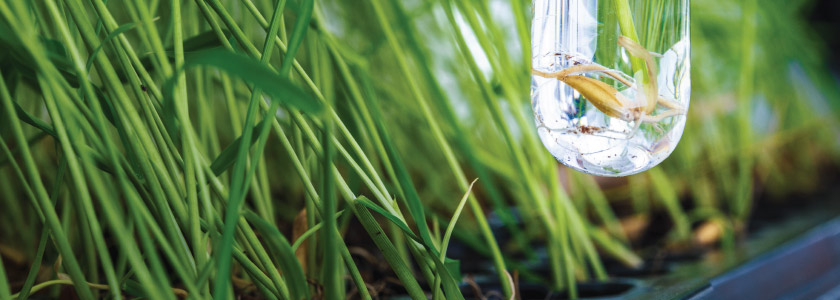Could CRISPR help us combat world hunger?

Takeaway: Recently published in Nature Plants, data from “CRISPR-Cas12b enables efficient plant genome engineering,” opens the door for investigation into other ways performing plant gene editing, activation, and repression, in one Cas12 system, could positively impact global food production.
Cas12 put to the test
By now, most of us are familiar with the Cas9 system. Typically compared to a pair of molecular scissors, this technology introduces targeted double-stranded breaks into the genome of living organisms. As the first CRISPR enzymes capable of such a feat, Cas9 built a reputation rooted in simplicity, consistency, and efficiency. While an extraordinary tool for genome editing, Cas9 does not target all available sequences in genomic space, leaving a sea of discoveries potentially hidden.
When the Cas12 family of nucleases joined the CRISPR lineup, researchers gained the ability to target different DNA sequences, and had the added benefit of gene regulation across numerous applications. Yiping Qi, assistant professor of Plant Science, and his team at the University of Maryland explored the extended functionality of Cas12b to provide a broader range of test sites and simultaneously target multiple genes in a single step. While seemingly small to a novice eye, these features are critical to projects where genetic expression of a trait in plants requires activation and repression intervals.
In an article shared by the College of Agriculture & Natural Resources at the University of Maryland, Qi noted the following: “This system is more versatile because we can play with more modifications, more domains, and there are therefore more opportunities to engineer the whole system. The added complexity allows for targeting of more specific or other effectors for gene activation, repression, or even epigenetic changes. Only when you have this kind of hybrid system with more complexity do you get the most robust gene activation and editing capabilities.”
Qi et al, sought to compare efficacy of Cas12b from a variety of bacterial strains to inform improved genome engineering in rice crops. The team compared Alicyclobacillus acidoterrestris, Alicyclobacillus acidiphilus, Bacillus thermoamylovorans, and Bacillus hisashii to determine the overall effectiveness of each variation within the Cas12b system. The team’s data suggest a Cas12b system capable of:
-
Potent SSNs for targeted mutagenesis in rice
-
Multiplexing during genome editing by generating combinational mutants
-
CRISPR interference effects contributed to by transcription interference binding
-
Successful transcriptional activation, with simultaneously recruitment of activators
In addition, the team developed a Cas12b transcriptional activation system for plants, setting the stage for future nuclease fusion technologies (i.e., base editing or prime editing systems), and presenting researchers with the possibility of increased efficiency, efficacy, and versatility in one self-contained system.
Why are we excited about these Cas12b data?
The work of Qi and his team targeted rice but they hope to explore other crop systems, a topic which they are especially passionate. “This type of technology helps increase crop yield and sustainably feed a growing population in a changing world. In the end, we are talking about broad impact and public outreach, because we need to bridge the gap between what researchers are doing and how those impacts affect the world,” stresses Qi.
With time and the assistance of new CRISPR research products, the Cas12 system may prove to be the key that enables research teams to unlock the challenges facing crop diseases, pests, and changing climates, helping us address one of the most significant challenges of our time—world hunger.
To learn more about the potential value our complete CRISPR solutions may provide to your research, contact us today.
*RUO—For research use only. Not for use in diagnostic procedures. Unless otherwise agreed to in writing, IDT does not intend for these products to be used in clinical applications and does not warrant their fitness or suitability for any clinical diagnostic use. Purchaser is solely responsible for all decisions regarding the use of these products and any associated regulatory or legal obligations.
